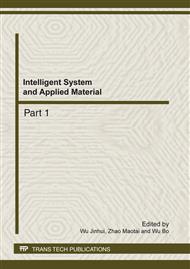p.152
p.157
p.161
p.165
p.170
p.176
p.181
p.186
p.191
Low Potential Electrochemical Polymerization of 1-Hydroxy-2-Methoxybenzene and Characterization of its Polymer
Abstract:
The electrochemical polymerization of 1-hydroxy-2-methoxybenzene (HMOB) was performed in boron trifuoride diethyl etherate (BFEE) and a novel conducting polymer poly(1-hydroxy-2-methoxybenzene) (PHMOB) was easily electrodeposited. The oxidation onset of HMOB was initiated at 0.97 V versus a saturated calomel electrode (SCE). PHMOB films obtained from BFEE showed good thermal stability. NMR studies showed that the polymerization of HMOB occurred at C4 and C5 position. Fluorescent spectral studies indicated that doped and dedoped PHMOB were good blue emitters, with the same excitation wavelength maximum of 348 nm.
Info:
Periodical:
Pages:
170-175
Citation:
Online since:
February 2012
Authors:
Price:
Сopyright:
© 2012 Trans Tech Publications Ltd. All Rights Reserved
Share:
Citation:


